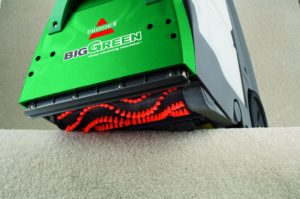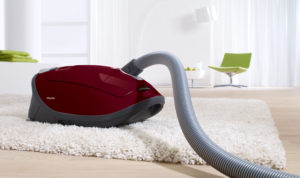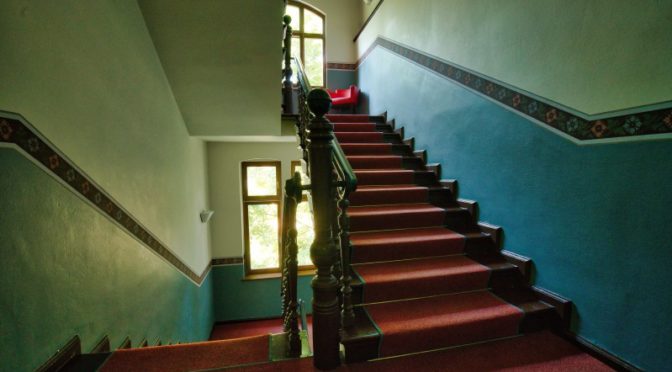
If you’re debating over whether or not to install carpet on stairs (and there are many pros and cons to doing so), a compromise you might want to consider is installing a stair runner instead of a full carpet. Stair runners are essentially strips of carpet on stairs that cover the center portions of a staircase instead of the full width. You can buy them in just about any color or pattern you’d like, and you can choose the widths as well. Today we’re going to look at the pros and cons of stair runners and how to choose widths, patterns, underpads, and more.
Why consider a carpet runner on your stairs?
The primary reason to consider a stair runner, in our books, is safety. While aesthetics are important, it’s even more important to keep children, pets, guests, and the elderly and differently-abled from falling down your beautiful hardwood or tiled stairs. Bare floors are always going to be more slippery than carpet because the fibers in carpet provide traction, so if you’re looking for a way to make stairs safer, this is a cheaper way to go at it than by adding a full carpet to your staircase.
Aside from the safety benefit by providing a secure place to walk up or down stairs, carpet runners also provide increased comfort due to carpet padding as well as noise reduction from the click-clack of bare floors and hard surfaces. And yes, there’s also a strong aesthetic benefit to stair runners; they draw attention to the fabric while the bare flooring beside it serves as an accent to the focal point of the runner.
How wide (or narrow) should a carpet runner be on stairs?
When choosing a carpet runner, you can either buy a pre-made runner, which will typically include a pattern, or have one tailored to your staircase, which will typically be done through broadloom. Which option you choose will depend to some degree on your stair width.
When stairs are 3 feet wide or within a couple of inches of this width, a 27″ runner is typically best. With such a runner, you have 75 percent coverage (27/36), which provides physical security by giving you enough foot room as well as psychological comfort–you don’t feel like you’re walking on a runway but you also don’t feel the runner overpowers your stairs.
If you have wider stairs, such as stairs 4 or 5 feet wide, you’ll want a 32-33″ runner, as you’ll again have a pleasant ratio of 55-67% coverage, which, while less than that for narrower stairs, works well for wider stairs to prevent the runner from appearing to dominate or overshadow your stairs.
If you own a custom staircase that’s narrower or wider than the ranges above, it’ll be best to look for a custom made runner so you can choose a scale that makes sense for your home.
Are certain patterns better (or worse) on stair runners?
There are a wide range of patterns to choose from for runners, and it can be tempted to think purely of which looks most appealing to the eye. However, once again, you’ll want to keep practicality in mind. Certain patterns work well with flat surfaces like hallways but don’t work on folded environments, such as staircases. The mismatch can become even more obvious with winding or curved staircases.
In general, we recommend sticking with non-geometric designs when choosing patterns for stair runners unless your stairs are perfectly straight and you don’t have any curving steps. The reason behind this is because specific repeating patterns, such as those of squares, triangles, diamonds, or other shapes, will look obviously mismatched if the pattern ends or runs into angles. Simpler patterns like flowers or abstract lines, such as those you’ll see in Oriental rugs, yield better results. You don’t need to be nearly as exact in matching lines and angles, and it will take far less skill to enjoy the results.
Is an underpad or cushion necessary for a stair runner?
Even though carpet runners aren’t typically as wide as full carpets, they’re still going to need cushions or underpads. You’ll want a thin cushion for a stair runner so the runner’s height isn’t raised significantly above the stairs, as this can pose a safety hazard. Aim for a dense underpad that provides a good amount of support while remaining narrow and keeping the carpet from flexing significantly.
A good thickness to aim for is 1/4″; rubber pads work well for stair runners due to their firmness and density. Make sure the cushion is a bit narrower than the carpet runner so the runner grips the stairs tightly. This will also keep the underpad from being seen when looking at an open staircase from the side.
Do you need special carpet cleaners or vacuums for stair runners?

Typically, any good carpet cleaner or vacuum will be able to care for your stair runner. That said, we’d still recommend investing in quality machines that can a.) take care of carpets throughout your home, regardless of style or pile, and b.) last long enough to pass down to your children. For carpet cleaners, we trust the Bissell 86T3 Big Green more than any other cleaner below $1,000; as we’ve learned repeatedly (e.g., here and here), it’s powerful, it’s durable, and it’s reliable enough to be used professionally.

For vacuums, we prefer canisters to uprights for their flexibility, power, and reliability, and our two top choices for carpeting are the Miele Complete C3 Soft Carpet or the Miele Compact C2 Electro+. The Soft Carpet is our overall top choice while the Electro+ is a fine compromise for families with smaller budgets. Either will clean carpets of any pile height and style as well as hardwood floors with ease. Most importantly, both are buy-it-for life machines.
![]() You can buy the Bissell 85T3 Big Green carpet cleaner here on Amazon. You can buy the Miele Complete C3 Soft Carpet here or buy the Miele Compact C2 Electro+ here.
You can buy the Bissell 85T3 Big Green carpet cleaner here on Amazon. You can buy the Miele Complete C3 Soft Carpet here or buy the Miele Compact C2 Electro+ here.
![]() Canadians can buy the Miele Soft Carpet here, the Compact Electro+ here, and the Bissell Big Green here.
Canadians can buy the Miele Soft Carpet here, the Compact Electro+ here, and the Bissell Big Green here.
 If you find our research on PMC helpful, you can follow our efforts to keep maniacally reviewing home cleaning tools by shopping through our links above. We promise to keep fighting the good fight against every horror children, animals, and grown, yet messy humans can inflict upon a clean home.
If you find our research on PMC helpful, you can follow our efforts to keep maniacally reviewing home cleaning tools by shopping through our links above. We promise to keep fighting the good fight against every horror children, animals, and grown, yet messy humans can inflict upon a clean home.

